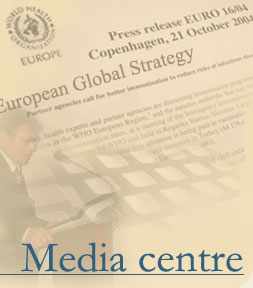WHO calls for urgent review of environment and health regulatory standards for mining precious metals in Europe
In the wake of environment and health problems related to precious metal mining operations in Romania, Spain and Kyrgyzstan, WHO experts issued a strong call today for the rapid adoption and application of the safety provisions outlined in the Protocol on Water and Health to the 1992 Convention on the Protection and Use of Transboundary Watercourses and International Lakes. The Protocol was signed by representatives of 35 WHO and United Nations Economic Commission for Europe (UN/ECE) Member States at the Third Ministerial Conference on Environment and Health, held in June 1999 in London. The Protocol will come into force and become legally binding when ratified by 16 UN/ECE countries.
By signing the Protocol, ministers of health and the environment agreed to take all appropriate measures to ensure adequate sanitation and adequate supplies of wholesome drinking-water, to protect water resources, and to safeguard human health against water-related disease from recreation, aquaculture, wastewater and sewage sludge. In particular, the Protocol states that:
The Parties shall, in particular, take all appropriate measures for the purpose of ensuring … effective protection of water resources used as sources of drinking water, and their related water ecosystems, from pollution from other causes, including agriculture, industry and other discharges and emissions of hazardous substances. This shall aim at the effective reduction and elimination of discharges and emissions of substances judged to be hazardous to human health and water ecosystems.
“What we are seeing here is great variability in the strength of environment and health impact assessment and other regulatory standards between countries in our Region and beyond,” notes Dr Gunter Klein, Director Environment and Health Department at the WHO Regional Office for Europe. “We urgently need to get relevant United Nations bodies, governments, industry and citizen’s groups around the table and agree better ways to protect environment and health.”
“Of particular concern,” continues Dr Klein “is that, while all the headlines are about cyanide, we already know that high concentrations of heavy metals, including copper and lead, are being detected and this may have additional impact on human health.”
The European Environment Health Committee (EEHC) is guiding the follow-up to the agreements reached at the London Conference. EEHC includes representatives of the European Union, the World Bank, UN/ECE, the Council of Europe, United Nations Environment Programme, the European Environment Agency, the Organisation for Economic Co-operation and Development, nongovernmental organizations and governments; it will be asked to consider ways to speed up ratification of the Protocol on Water and Health and to review other action needed to prevent transboundary threats to the environment and health due to waste from industrial and other sectors and protect people’s health when incidents occur.
WHO will continue to work with its Member States by supporting national environment and health action plans and established cross-border mechanisms such as the accident and early warning system (AEWS) of the Danube River Basin Environmental Management project of the Global Environment Facility, a unit of the United Nations Development Programme.
In addition, at the request of the Hungarian government, the United Nations is sending an expert team, with participation from WHO, to examine and report on the environment and health situation related to the mining-related incident this past week in the Szamos river in Romania.
For more information, contact:
Communication and Public Affairs
WHO Regional Office for Europe
Scherfigsvej 8, DK-2100, Copenhagen, Denmark
Fax: +45 39 17 18 80
E-mail: fap@who.dk or ana@who.dk
WHO European Centre for
Environment and Health
Rome Division
Fax:+39 06 48 77 599
E-mail: RAE@who.it

